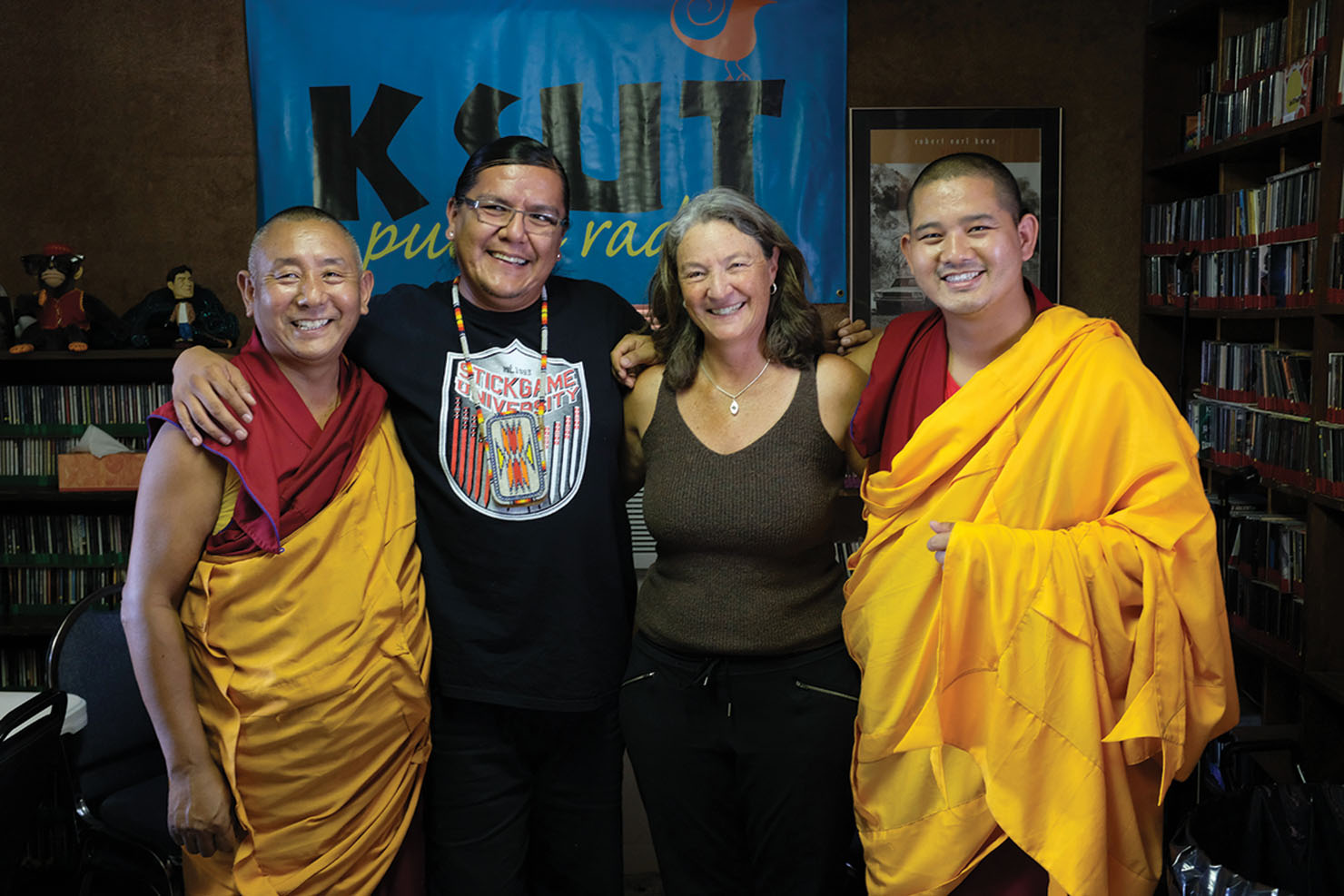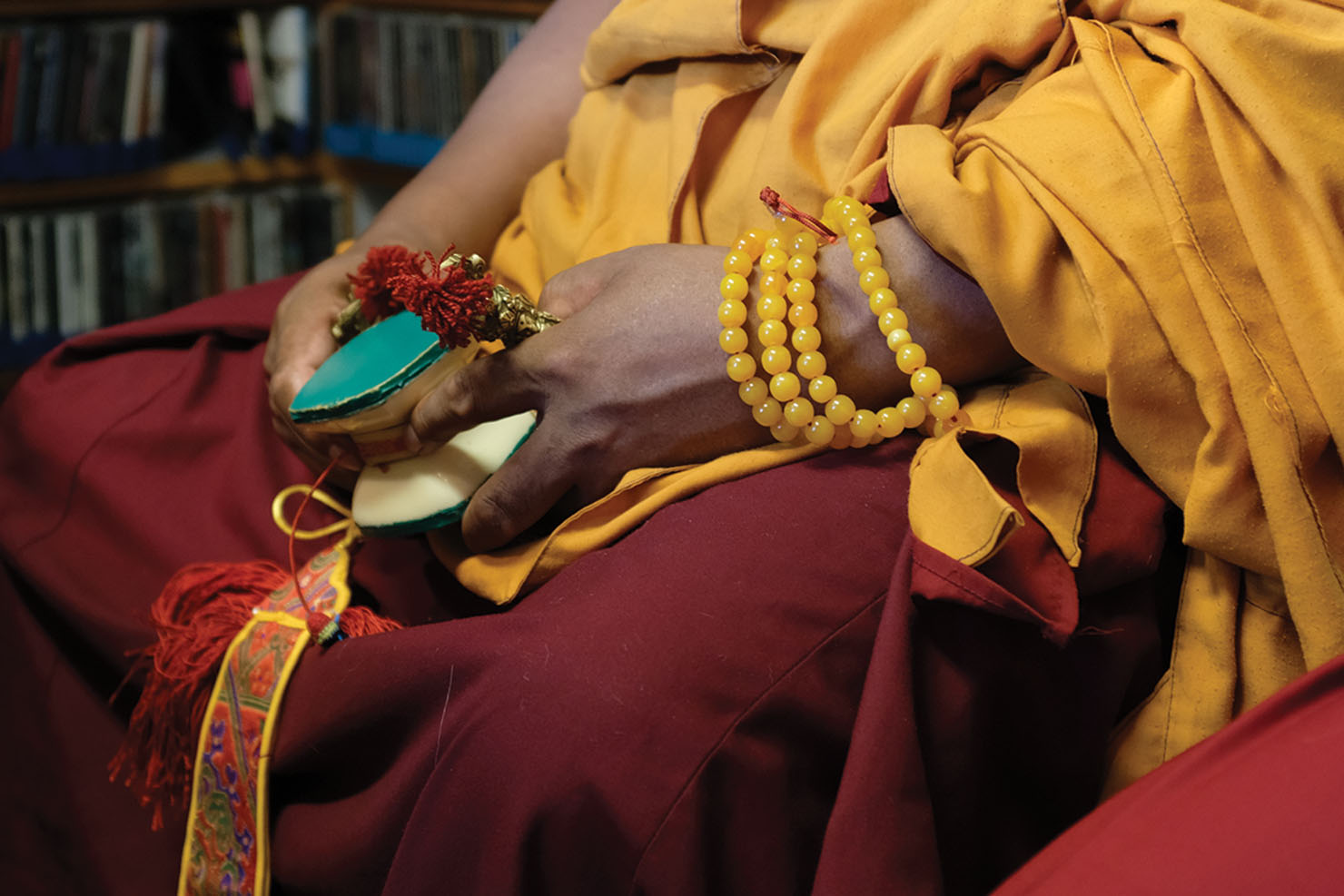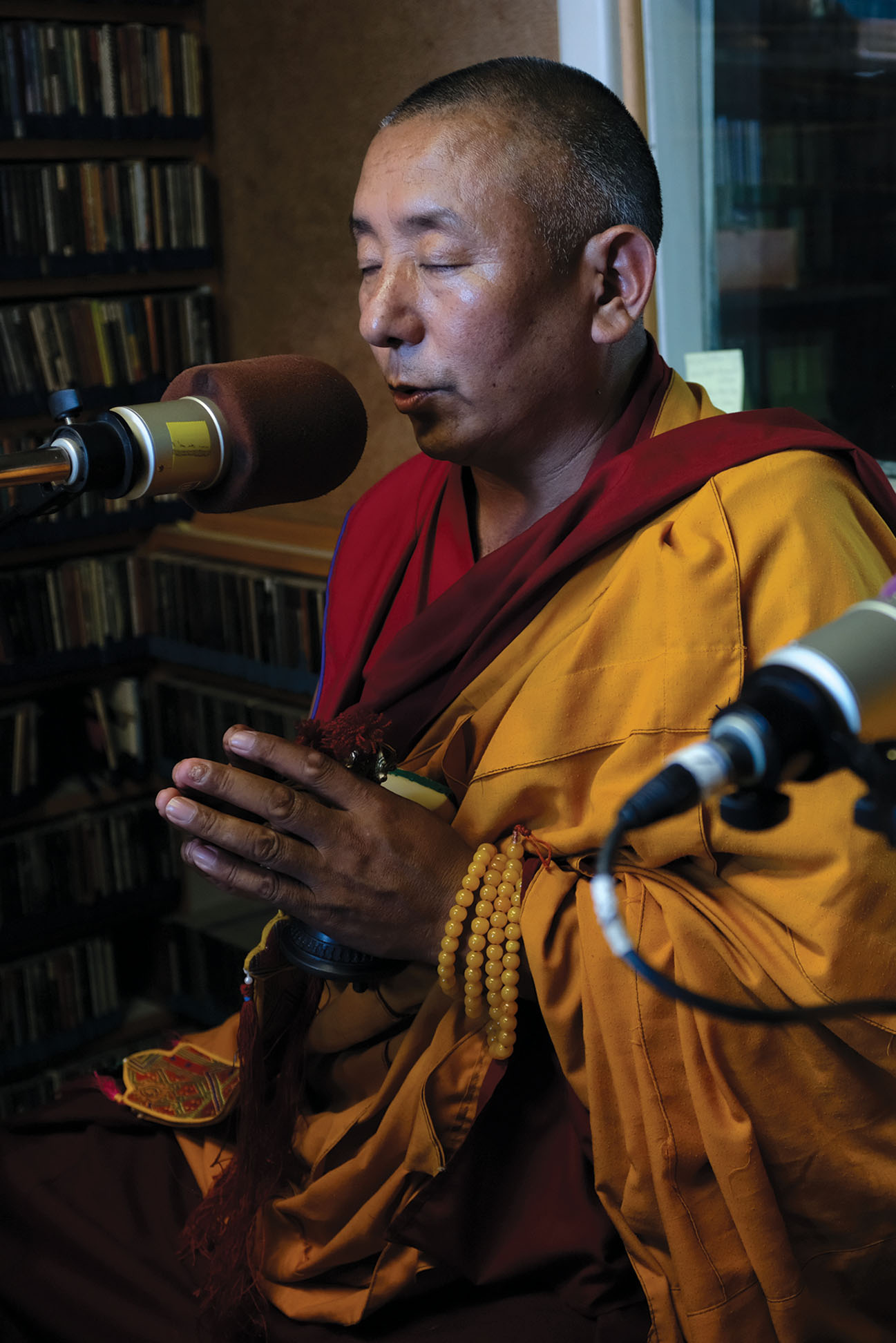Monks from the Gaden Shartse Monastery of Tibet paid a visit to the KSUT studio Friday, July 12 for a live interview during their recent trip to Southwest Colorado as part of a cultural exchange and fundraising tour.
The exchange is a celebration of unity and culture, hosted by local volunteers working with Peaceful Heart Durango. The visiting Buddhist monks hail from one of the oldest Tibetan orders, and last visited Durango in 2015. This year the six representatives hosted a series of events and presentations from July 10 — July 17. Among the events were the creation of a public sand mandala, multiple speaking engagements, and ritual chanting. The monks also offered private blessings within the community.
According to a recent press release, the monks depend on donations for their survival, and the generosity of our community has kept them coming back—this is their fourth visit here.
KSUT Executive Director, Tami Graham had the pleasure of interviewing Geshe Lobsang Wangyal and Venerable Lobzang Yeshey (who goes by Shanu) as part of KSUT programing.
The Tibetans gave a short history of their monastery, and their beliefs. Then they shared songs, prayers and chanting during the live radio interview.
The monks began the show by highlighting their mandala. “This time we are making a sand mandala, for the Buddha of Knowledge,” Geshe Lobsang Wangyal said.
They explained the significance of the mandala, which they constructed over the course of the next five days inside of the Sorrel Sky Gallery in downtown Durango.
Once the long and artful process of creating an intricate mandala is finished, the monks wipe it clean, destroying it to further the belief of impermanence. The sand used for the mandala holds the blessings, good thoughts, and energy of this process. This sand is then used to bless a home, garden, or in this case, the Animas River, where it was scattered at week’s end.
“When the sand goes into the river, Tibetan people believe this sand has been blessed [by deities]. They believe the sand will beautify the river,” Wangyal said. “Nothing in life is permanent, it is impermanent.”
The visiting monks implied that greed and anger fuel many of the world’s problems, both socially and physically. Referencing the Six Root Delusions in Buddhism, they said that many of the world’s problems could be avoided if one is able, or society as a whole is able, to give up those negativities.
“Their home monastery, Gaden Shartse Monastic College, is situated amid lush green hills and jungle in the remote countryside of southern India. It was founded in 1969 as an effort to re-establish one of the great monastic traditions of Tibet. A small group of elder monks and fifteen young boys, all of whom had managed to escape the destruction in Tibet, settled on land given to them by the Indian government in Mundgod, Karnataka,” a statement by the Gaden Shartse Cultural Foundation said.
Today the college is at the forefront of the revival of Tibetan Monastic education, with more than 1600 resident students, teachers, scholars, and spiritual practitioners. More than 70% of the members are between the ages of 10 and 25 and 80% of these were born in Tibet. To this day, young monks arrive at the Monastery weekly from Tibet, seeking shelter and education. Due to the success of the academic program and the quality of the teachers at the monastery, Gaden Shartse has established a reputation as being the leader in the field of Buddhist and Tibetan studies, according to a recent press release.
If you would like to make a donation or learn more about the Gaden Shartse Cultural Foundation visit their website at www.sacredartsoftibettour.org. According to the organization, all funds will be used to preserve Tibetan culture, for educational supplies, teachers, buildings, maintenance, and outreach at Gaden Shartse Phukhang Monastery in the Tibetan Refugee Settlement at Mundgod, India.






